M-ASK, M-PSK, and QAM-M KMod and Demod
Purpose of the LAB: To put into practice M-ASK, M-PSK and QAM-M modulations and observe their properties.
Educational objectives:
Consider M-ary modulations with different schemes.
Visualize the constellation of modulations.
Analyze their spectral efficiency and noise sensitivity
Compare performance via BER
Variables
Contents of the variables 'Delay', 'rrc-taps' and 'timing_loop_bw'
Delay: int (5.5 * sps + 7)
rrc_ taps : firdes.root _raised_ cosine ( nfilts , nfilts , 1.0/float( sps ), Alpha, 11* sps * nfilts )
timing_loop_bw : 0.0628
Blocks Setting
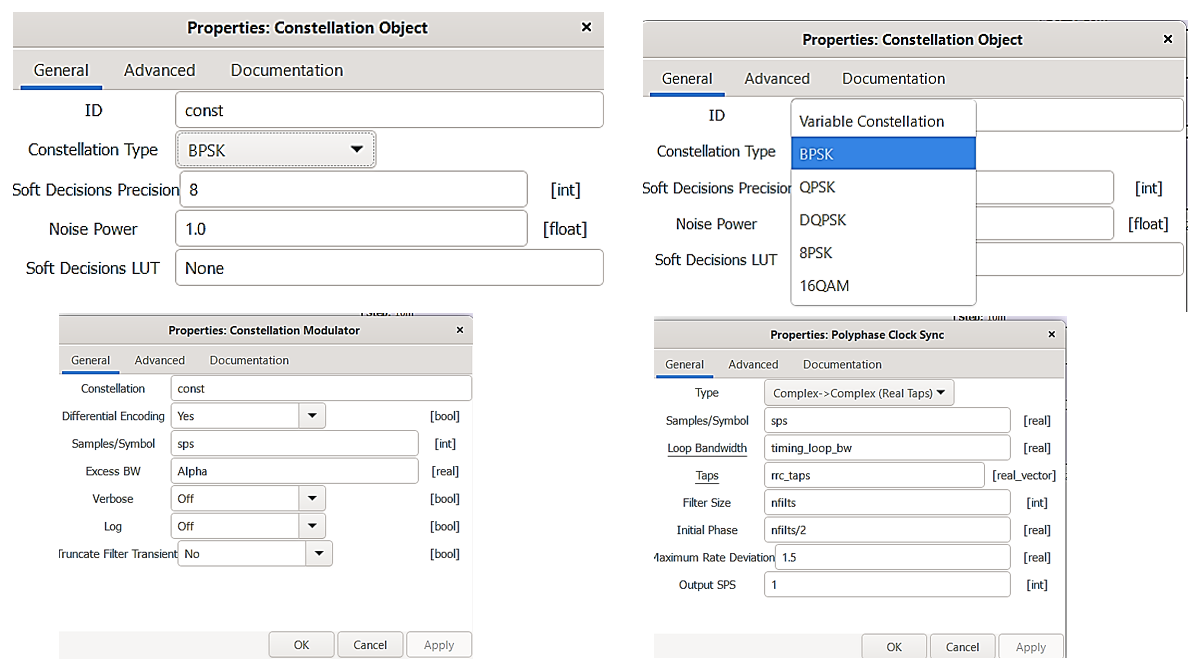 For a 2-ASK or BPSK Media:BPSK.grc
For a 2-ASK or BPSK Media:BPSK.grc
M-PSK
A. Modify the previous flowgraph to obtain a QPSK Media:QPSK.grc 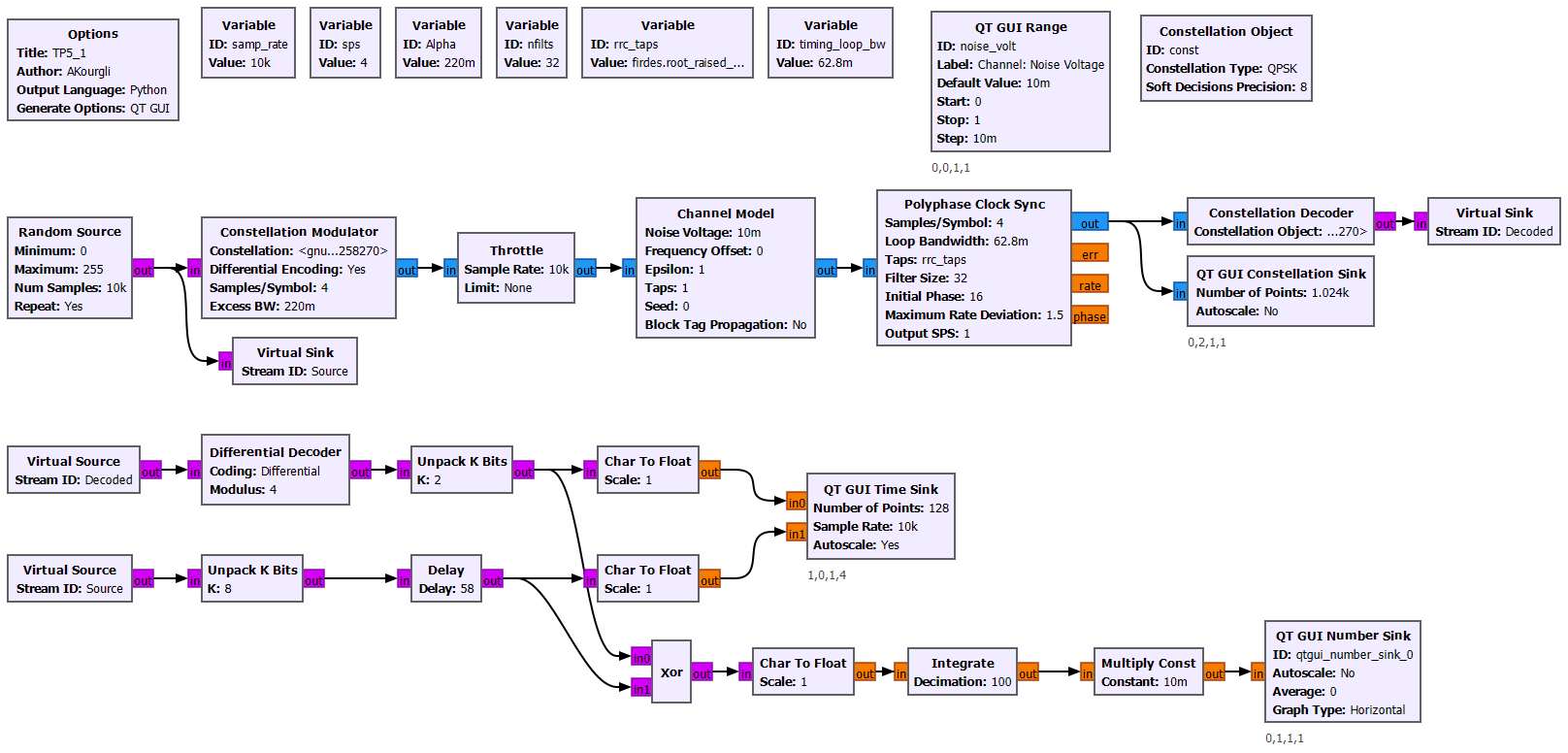
- Edit Constellation object QPSK.
- Modulus Edit 4.
- Add a K-bit Unpack block (K: 2) to be placed as shown
- Multiply the delay by 2 ( int (5.5 * sps + 7)*2
- Observe the BER as the noise power increases.
B. Modify the previous flowgraph to obtain an 8-PSK Media:8psk.grc 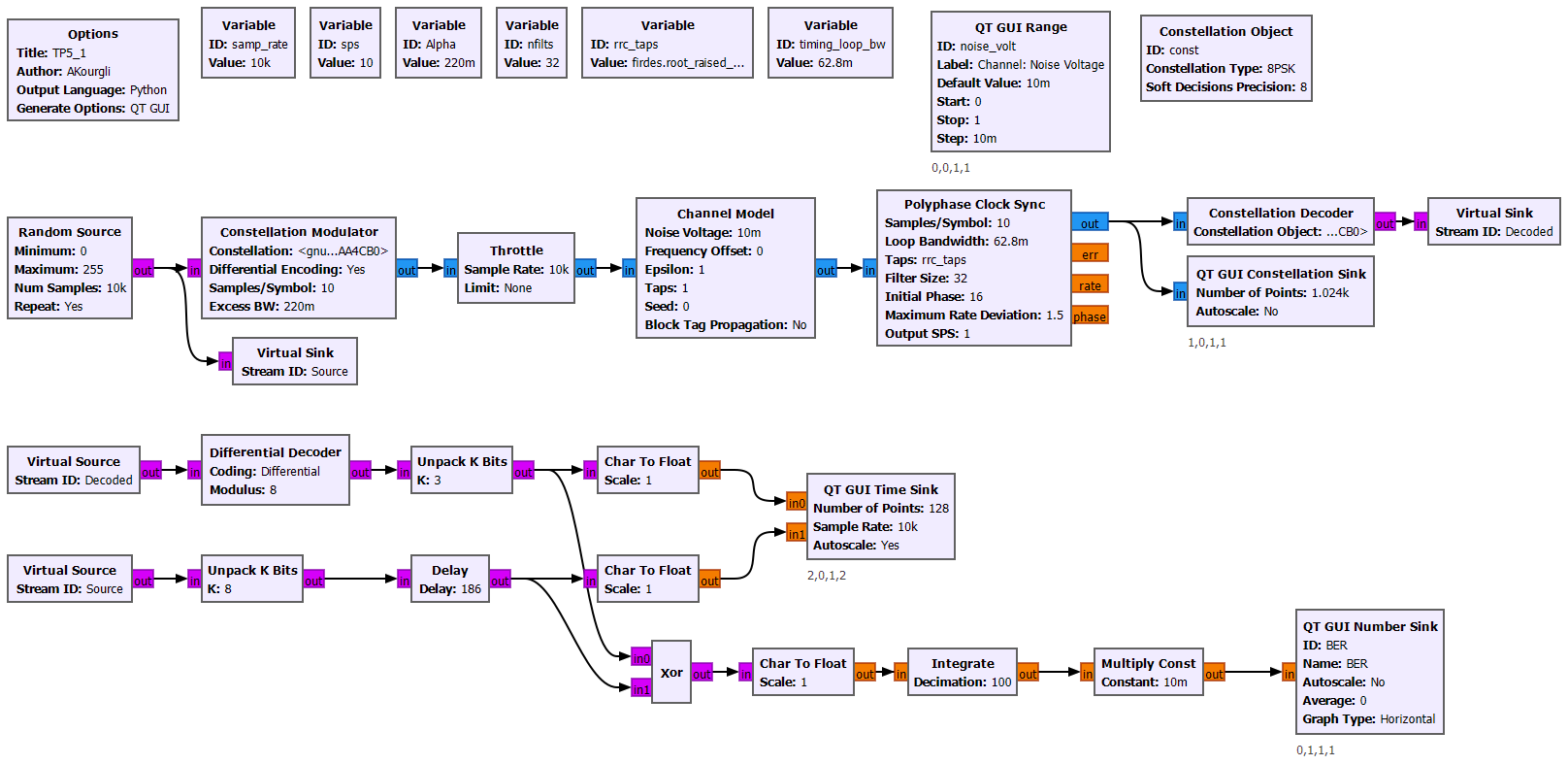
- Edit Constellation object 8PSK
- Modulus Edit 8
- Add a K-bit Unpack block (K: 3).
- Observe the BER as the noise power increases.
- Multiply the delay by 3 ( int (5.5 * sps + 7)*3
M-ASK
A. Modify the previous flowgraph to obtain a 4-ASK.
Replace the Constellation Object by Constellation Rect Object block
4-ASK Media:4ASK.grc whose flowgraph is given below : 
Modify Constellation Rect Object as shown 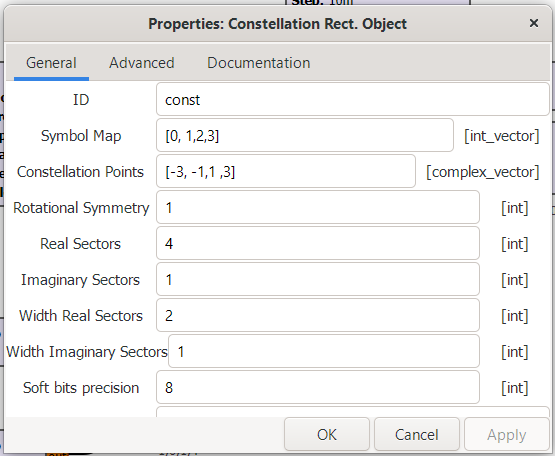
Modulus Edit 4.
Add a K-bit Unpack block (K: 2)
Multiply the delay by 2 ( int (5.5 * sps + 7)*2
Observe the BER as the noise power increases.
8-ASK Media:8ASK.grc whose flowgraph is given below : 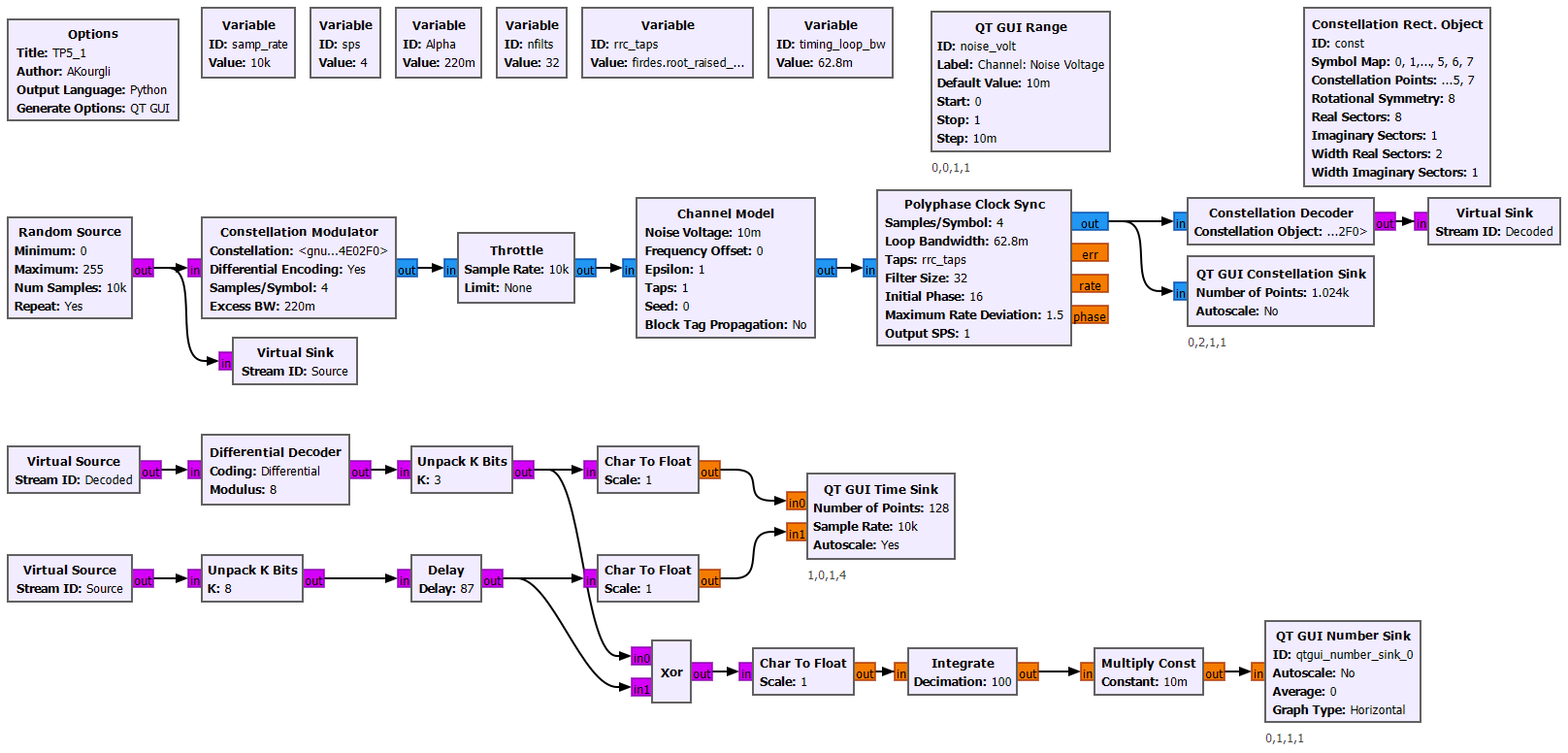
Edit Constellation Rect Object as shown 
QAM-M
QAM-16 Media:QAM16.grc whose flowgraph is given below : 
Modify the previous flowgraph to obtain a 16-QAM
Edit Constellation object 16QAM
Modulus Edit 16
K-bit Unpack block (K: 4).
Observe the BER as the noise power increases.
Multiply the delay by 2 ( int (5.5 * sps + 7)*4